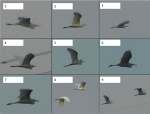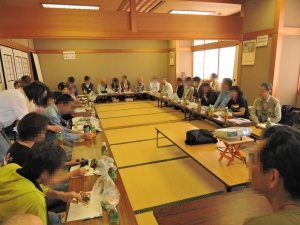The Aichi Banch of Wild Bird Society of Japan


Survey
Here is a general finformation of the count survey of the hjghway interchange loops.
Reason for starting the survey
Colonial-breeding Egrets and Herons usually prefer nesting on forests of river/lakesides, or of temples/shrines. In Kanie and Yatomi city in Aichi prefecture Japan, six heron species (Ardea cinerea jouyi, Ardea alba modesta, Egretta intermedia intermedia, Egretta garzetta garzetta, Bubulcus ibis coromandus, Nycticorax nycticorax) have bred together in the forest of highway interchange loops since thirty or forty or more years ago. Central Nippon Expressway Co., Ltd, engaged in highway maintenance service, has managed the egret colonies since long years ago. Yatomi Bird Sanctuary Park, The Aichi Branch of Wild Bird Society of Japan, and Central Nippon Expressway exchanged a memorandum of understanding for cooperation and information exchange for protection of the breeding environment. In accordance with the memorandum, we, the Aichi Branch of Wild Bird Society of Japan, have conducted the egret count surveys at the colonies of the Kanie and Yatomi highway interchange loops.
Survey schedule
The egret count surveys are conducted on the last Saturday in May, June, July and August every year. Preliminary survey may be conducted in April.
Method of count survey
While identifying the six species (Blue Heron, Great White Egret, Intermediate Egret, Little Egret, Cattle Egret and Black-crowned Night Heron), we count the egrets flying back to their colonies in the evening toward dusk from five places of observation spots at each interchange loops. Prior to the count for the flying back egrets, the number of nesting or resting individuals are counted in the interchange loops . For the count in the loops, because usually no one can access to the inside of the interchange loops except for a staff of Central Nippon Expressway, two or three observers are carried to inside of the loops by a yellow highway patrol car of Central Nippon Expressway. The count in the loops usually finishes at 5:30 pm, and the count indivisuals flying back to the colonies starts at 5:30 pm and continues until twenty minutes after sunset.
Participants
Observers are mainly volunteer members of the Aichi Branch of Wild Bird Society of Japan, and include college students, high school students, children and parents.
Pictures for the egret count



Study session for the flying egret identification
Identification for the flying egrets is complicated because four species (Great White Eegret, Intermediate Egret, Little Egret and Cattle Egret in winter plumage) have similar appearance while they are flying. In particular, the Great White Egret and the Intermediate Egret look the same during flying. In order to overcome the identification difficulty, we have a study session for the egret identification with video and pictures. Here is a part of material which we use at the study session. It shows the four species of flying egrets at dusk. Let's try!
 (Click image to enlarge)
(Click image to enlarge)




